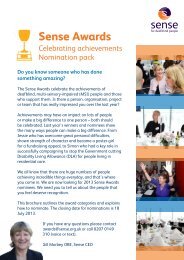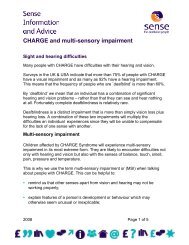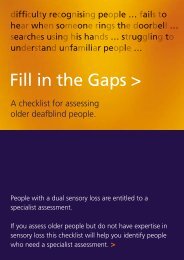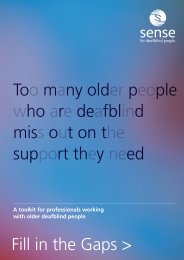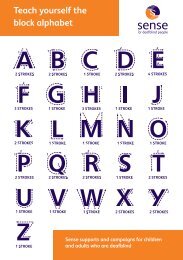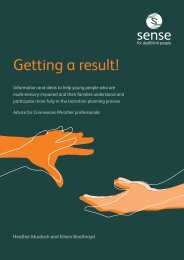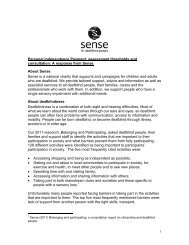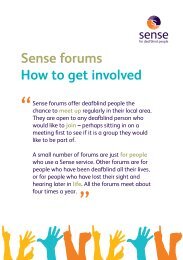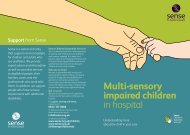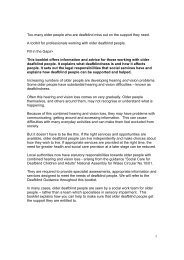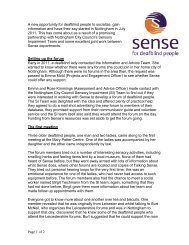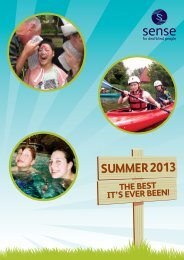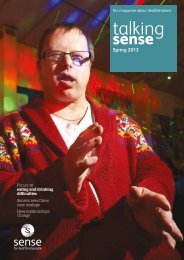MSI Unit Curriculum - Sense
MSI Unit Curriculum - Sense
MSI Unit Curriculum - Sense
You also want an ePaper? Increase the reach of your titles
YUMPU automatically turns print PDFs into web optimized ePapers that Google loves.
<strong>MSI</strong> <strong>Unit</strong> <strong>Curriculum</strong>: Phase 1row, row the boat’ with a pupil who rocks. Information from observing repetitivebehaviours is also used in choosing objects for use with pupils – for example, apupil who shakes objects may be introduced to different soundmakers over time;a pupil who likes stroking hair may be willing to explore fur fabric.Many pupils begin exploration of the environment by exploring the faces oftrusted adults. Close examination of keyworkers’ faces (or other acceptable bodyareas) by pupils using sight and/or touch is accepted and used as part of theirinteraction.Staff model different ways of exploring objects and show pupils differentfeatures, but do not expect pupils to follow their lead. Objects are presented in aconsistent place and manner. They may be anchored (usually clamped to a tableor tray) to help pupils explore them without needing to control their position.Any interaction with an object or person is accepted as long as it is not harmfulor painful – so, for example, sucking, mouthing or licking objects is interpreted asexploration and is not discouraged.Pupils are given frequent opportunities to experience cause and effect, with caretaken to ensure that effects rapidly and reliably follow causes. Particular careis taken that pupils with more severe or fluctuating sensory impairments canconsistently see/hear/feel the effects of their actions.Sensory responsesPupils are aware of input from residual sight, hearing and/or other senses –they show reflexive responses.They attend intermittently to stimuli. They generally respond to only onesense at a time.The environments which pupils use are kept uncluttered, visually and auditorily.This needs considerable commitment from staff, particularly in minimisingextraneous noise.Many pupils show a significant delay in responding to stimuli. Staff habituallywait for pupils to respond, for as long as necessary. Responses may be small andfleeting – for example, a momentary hand movement.People and items are presented slowly and clearly to pupils, in familiar, quietenvironments. Many pupils cannot attend to an item or sound if other sights orsounds compete.Close sensory cues (for example, warmth, breath, contact with an adult’s body)are used to support pupils’ use of sight and/or hearing.27



